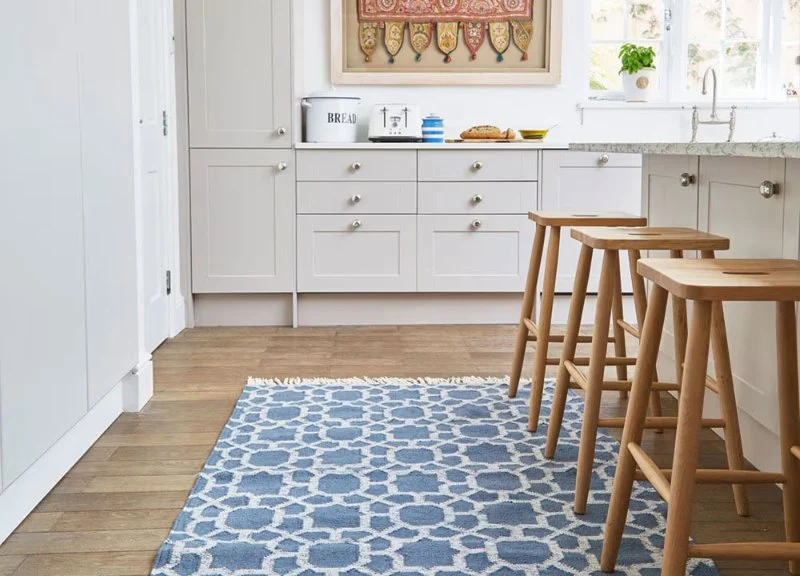
- 1. Why Choose Carpet for Your Kitchen?
- 2. Types of Carpet for Kitchens
- 3. Durability and Maintenance Considerations
- 4. Color and Style Choices for Kitchen Carpets
- 5. How to Install Carpet in Your Kitchen
- 6. Where to Buy the Best Kitchen Carpet
1. Why Choose Carpet for Your Kitchen?
Carpet is often not the first material people think of for kitchens. With high-traffic areas, spills, and food messes, it's understandable why many homeowners opt for tile, hardwood, or vinyl in this space. However, carpet in the kitchen has several advantages that can make it a worthwhile choice for certain homes. For one, carpet provides warmth and comfort, especially in colder months when you’re standing for long periods. It can make the kitchen feel more inviting and cozy.
Additionally, carpet can help with noise reduction, which is ideal if you have a busy kitchen. The soft texture absorbs sound, making the kitchen quieter and more peaceful. Carpet also adds a touch of style and can be used to create a cohesive design with the rest of your home’s decor. However, it’s important to choose the right type of carpet to ensure it will last and stand up to kitchen conditions.
2. Types of Carpet for Kitchens
When choosing carpet for your kitchen, you’ll want to opt for materials that can handle spills, moisture, and heavy traffic. Here are a few types of carpets that are best suited for kitchen environments:

Lucky Sevens Carpet
West SpringfieldHampden CountyMassachusetts
1752 Riverdale St, West Springfield, MA 01089, USA
1. Synthetic Fibers (Nylon, Polyester, Olefin)
Synthetic fibers, like nylon, polyester, and olefin, are a popular choice for kitchens because they are durable and resistant to stains. Nylon is known for its resilience, making it an excellent choice for high-traffic areas. Polyester, while soft, is also resistant to moisture and mildew, which is crucial in a kitchen setting. Olefin is moisture-resistant and easy to clean, making it a great option for kitchens that see a lot of spills.
2. Wool Carpet
Wool carpets are natural and luxurious, but they do require more maintenance. Wool is durable and naturally stain-resistant, but it can absorb moisture if not treated properly, so you need to be cautious with spills. Wool carpet is best suited for kitchens that don’t have heavy moisture exposure and can add an upscale touch to your space.
3. Carpet Tiles
Carpet tiles are an excellent option for kitchens because they are modular and easy to replace. If one tile gets damaged by a spill or stain, you can replace it without having to redo the entire floor. Carpet tiles also come in a variety of colors and patterns, allowing you to customize your kitchen flooring to suit your style.
3. Durability and Maintenance Considerations
In a kitchen, durability and easy maintenance are key factors when choosing carpet. Kitchens are prone to spills, crumbs, and general messes, so you’ll want a carpet that can handle these challenges. Here are a few things to keep in mind:
1. Stain Resistance
When selecting a carpet for your kitchen, opt for a stain-resistant option. Many synthetic fibers are treated with stain-resistant coatings, which will help to protect your carpet from spills and stains. If you choose a wool carpet, make sure it is treated with a stain guard to enhance its durability.
2. Moisture Resistance
Moisture is a concern in the kitchen, especially around sinks and dishwashers. To prevent mold and mildew, choose a carpet made from moisture-resistant fibers like olefin or polyester. You can also treat your carpet with a moisture-resistant coating for added protection. For best results, make sure the carpet is installed properly to prevent moisture from seeping beneath the surface.
3. Easy Cleaning
Carpet in the kitchen should be easy to clean, especially if there are kids or pets involved. Low-pile carpets tend to trap less dirt and are easier to vacuum. Carpet tiles are also easier to clean and replace if necessary. Ensure that your carpet is easy to spot clean, and consider using a professional carpet cleaner for deep cleaning every year or two.
4. Color and Style Choices for Kitchen Carpets
Choosing the right color and style for your kitchen carpet can help tie the room together and complement your overall home decor. When selecting a carpet color, consider the following:
1. Light Colors
Light-colored carpets can make your kitchen feel larger and more open. Beige, light grey, and soft pastels are great choices for smaller kitchens, or if you want to create a more airy, spacious feel. However, light-colored carpets can show dirt more easily, so they may require more frequent cleaning.
2. Dark Colors
Dark-colored carpets, like charcoal or navy, are great at hiding dirt and stains, making them ideal for kitchens that see a lot of foot traffic. Darker carpets can also add sophistication and contrast to lighter kitchen cabinets or countertops.
3. Patterns and Textures
Patterns and textures can add visual interest to your kitchen. Consider using patterned carpets, such as stripes, chevrons, or geometric designs, to create a unique look. Textured carpets, like shag or loop pile, can add dimension and warmth to your kitchen.
5. How to Install Carpet in Your Kitchen
Installing carpet in your kitchen can be a DIY project or a job for a professional. Here are the general steps for installing carpet in your kitchen:
1. Prepare the Floor
Ensure that the floor is clean, dry, and level. If necessary, remove any existing flooring and repair any damage to the subfloor.
2. Measure and Cut the Carpet
Measure the area where the carpet will be installed and cut the carpet to fit. If using carpet tiles, lay them out in the desired pattern before securing them to the floor.
3. Install the Carpet
For traditional carpet, apply adhesive or use a carpet stretcher to install the carpet over the subfloor. Ensure that the carpet is tight and smooth, with no wrinkles or gaps.
4. Secure the Carpet
Secure the edges of the carpet using a carpet tack strip or adhesive. Trim any excess carpet and clean up any debris.
6. Where to Buy the Best Kitchen Carpet
When you're ready to purchase your kitchen carpet, consider visiting a trusted retailer like CarpetHub. CarpetHub offers a wide range of high-quality carpet options, including durable materials and customizable styles to fit your kitchen. Whether you're looking for synthetic or natural fibers, neutral colors, or bold patterns, CarpetHub has something for every home. Additionally, CarpetHub offers expert advice and professional installation services to ensure your kitchen carpet lasts for years to come.


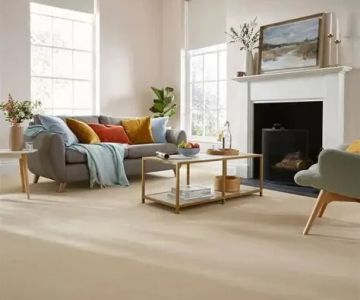




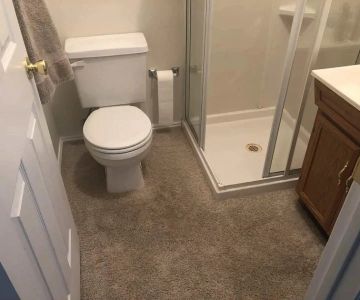
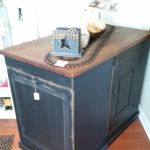 Cora's Country Cupboard4.0 (75 reviews)
Cora's Country Cupboard4.0 (75 reviews) USA Flooring4.0 (31 reviews)
USA Flooring4.0 (31 reviews) Verona Carpet Shop1.0 (1 reviews)
Verona Carpet Shop1.0 (1 reviews) HomeGoods4.0 (388 reviews)
HomeGoods4.0 (388 reviews) Butler Floor & Carpet4.0 (85 reviews)
Butler Floor & Carpet4.0 (85 reviews) JM Carpet Express Inc2.0 (1 reviews)
JM Carpet Express Inc2.0 (1 reviews) Exploring the Benefits of Carpet Tiles in Modular Homes
Exploring the Benefits of Carpet Tiles in Modular Homes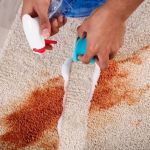 How to Handle Carpet Stains and Spills Like a Pro | Expert Cleaning Tips
How to Handle Carpet Stains and Spills Like a Pro | Expert Cleaning Tips Can Carpets Actually Improve Your Home’s Indoor Air Quality?
Can Carpets Actually Improve Your Home’s Indoor Air Quality? Understanding Carpet Density and Why It Matters
Understanding Carpet Density and Why It Matters Is Carpet Still a Good Investment for Your Home? | CarpetHub
Is Carpet Still a Good Investment for Your Home? | CarpetHub Why Carpet Can Be the Best Flooring Choice for Homes with Elderly Family Members
Why Carpet Can Be the Best Flooring Choice for Homes with Elderly Family Members